Supporting Local Cultural Activities
Railways have always played a major role in local development by serving as a network for the movement of people, goods, and information.EJRCF presents cultural events at various venues including train stations, and it also supports the preservation and development of local cultures.
The Railway Museum
We at the East Japan Railway Culture Foundation under took to build The Railway Museum in Saitama city as the centre-piece of the JR East 20th Anniversary Memorial Project. The museum has been open since 14 October 2007.
Old Shimbashi Station [Railway History Exhibition Hall
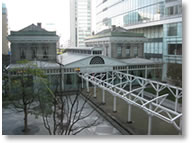 The 29-kilometer line between Shimbashi and Yokohama was the first rail service in Japan, opened in 1872. Thereafter Shimbashi Station fulfilled a role as the gateway to Tokyo until 1914 completion of Tokyo Station and subsequent transfer of passenger station function. The American architect Richard P. Bridgens designed the wooden frame, stone faced Shimbashi structure, but as it lacked the strength to withstand earthquakes it burned down during the Great Kanto earthquake of 1923.
The 29-kilometer line between Shimbashi and Yokohama was the first rail service in Japan, opened in 1872. Thereafter Shimbashi Station fulfilled a role as the gateway to Tokyo until 1914 completion of Tokyo Station and subsequent transfer of passenger station function. The American architect Richard P. Bridgens designed the wooden frame, stone faced Shimbashi structure, but as it lacked the strength to withstand earthquakes it burned down during the Great Kanto earthquake of 1923.
From 1914 and on, the station became Shiodome Freight Terminal, exclusively handling freight trains up to 1986, when it was shut down. Then, with the division and privatization of JR in 1987, it was transformed into the multipurpose city community “Shiodome Sio-site,” comprising various commercial, cultural and residential facilities. Excavation work during the transformation unearthed foundation stones and remnants of the platform, which have been designated national historic remains. The stones and the remnants were used to reconstruct the old 1872 platform directly above their old location.
Old Manseibashi Station
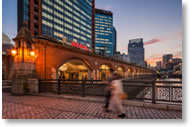 Manseibashi Station operated from 1912 to 1943 on the elevated Chuo Main Line between Kanda and Ochanomizu. In the store mAAch ecute Kanda Manseibashi (opened September 2013), we have installed “1912 stairs” that replicate the stairs used when Manseibashi Station was whenManseibashi Station was operating, installed the “1935 stairs”
Manseibashi Station operated from 1912 to 1943 on the elevated Chuo Main Line between Kanda and Ochanomizu. In the store mAAch ecute Kanda Manseibashi (opened September 2013), we have installed “1912 stairs” that replicate the stairs used when Manseibashi Station was whenManseibashi Station was operating, installed the “1935 stairs”
that were used when the Transportation Museum opened, and developed and opened a deck on the Manseibashi Station platform, which is used as free space and as a café called “2013 Platform”We also display exhibits – such as visuals and dioramas – to ensure that the remnants of Manseibashi Station continue to tell their story today.
Supporting Local Cultural Activities
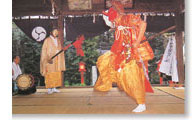 To help strengthen local communities, EJRCF assists regional offices of JR East with exhibitions, events, etc., to help preserve and popularize important local cultural heritages, arts, crafts, etc.
To help strengthen local communities, EJRCF assists regional offices of JR East with exhibitions, events, etc., to help preserve and popularize important local cultural heritages, arts, crafts, etc.
AKARENGA Concerts
The “AKARENGA Concerts” were named so after the beginning of the restoration of Tokyo Station’s AKARENGA station house in 2006, and have been held since the fall of 2004 at the Tokyo Station Marunouchi North Exit Dome.
The halls were transferred to Ueno Station “UENO NO MORI - AKARENGA Concert” and Sendai Station “MORI NO MIYAKO - AKARENGA Concert” in the spring of 2006 and continue to hold concerts where guests can casually enjoy classical music with Mr. Shinichiro Ikebe as the musical director.
Marukita Traditional Events
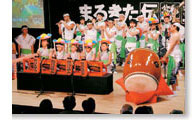 “Marukita Traditional Events” rediscovers the excellent traditional cultures of various spots in eastern Japan and is introduced at the Tokyo Station Marunouchi North Exit Dome. The hall has been moved to Omiya Station in 2006, where it holds its events.
“Marukita Traditional Events” rediscovers the excellent traditional cultures of various spots in eastern Japan and is introduced at the Tokyo Station Marunouchi North Exit Dome. The hall has been moved to Omiya Station in 2006, where it holds its events.
Art Lectures
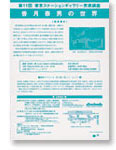 EJRCF presents lectures by art experts expanding on the themes of Tokyo Station Gallery exhibitions.
EJRCF presents lectures by art experts expanding on the themes of Tokyo Station Gallery exhibitions.